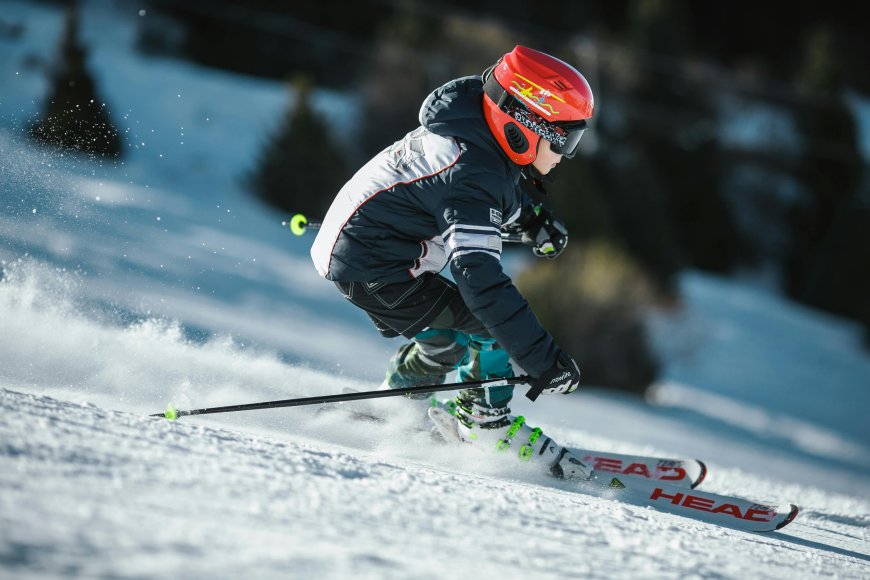How to choose snow skiing equipment
Choosing snow skiing equipment requires considering quality and fit. A good investment in snow skiing equipment can make your experience more enjoyable and safer on the slopes. When choosing skis, boots, gloves, goggles, and other accessories, they should match your skill level and preferred skiing style, as well as your individual needs in terms of comfort and performance.

Choosing snow skiing equipment requires considering quality and fit. A good investment in snow skiing equipment can make your experience more enjoyable and safer on the slopes. When choosing skis, boots, gloves, goggles, and other accessories, they should match your skill level and preferred skiing style, as well as your individual needs in terms of comfort and performance.
How to choose snow skiing equipment
Here's a comprehensive guide to choosing snow skiing equipment
1. Choosing Skis
- Quality and Size: Your skis should match your weight, height, and skill level.
- Surface Type: Flatter skis provide stability on wet snow, while curved skis offer comfort and better control on light snow.
2. Choosing Boots
- Fit and Comfort: Boots should be comfortable and fit the shape of your foot.
- Advanced Technologies: Look for boots with features like thermal insulation and good ankle support.
3. Ski Gloves
- Warmth and Flexibility: Gloves should keep your hands warm and allow freedom of movement.
- Correct Size: Ensure gloves fit your hands perfectly for optimal comfort and performance.
4. Skiing Sunglasses
- Protection and Visibility: Make sure sunglasses provide UV protection and enhance vision on the slopes.
- Fit: They should fit your face and comfortably accommodate your helmet.
5. Ski Clothing
- Thermal Insulation and Ventilation: Choose clothing that provides insulation in cold weather and ventilation on warm days.
- Waterproofing: Your clothing should be waterproof to keep you dry and warm.
6. Ski Helmet
- Protection: Choose a helmet that offers optimal head protection and meets safety standards.
- Fit: It should fit comfortably and securely on your head.
7. Ski Accessories
- Ski Bag: Choose a ski bag that accommodates all your equipment and provides ease of carrying.
- Other Ski Accessories: Make sure you have everything you need, such as ski poles, ankle guards, and sun protection.
By choosing the right skiing equipment that suits your needs and skill level, you'll be able to enjoy snow skiing with maximum comfort and safety.
How to choose snow skiing equipment that suits your skill level and needs
Selecting the appropriate equipment for your skiing skill level and needs is crucial to ensuring a comfortable and safe experience on the slopes. Here's a detailed guide on how to choose snow skiing equipment that meets these requirements
1. Assess Your Skill Level
- Before selecting equipment, assess your skiing skill level. Are you a beginner, intermediate, or advanced skier?
- Identifying your skill level will help you choose suitable equipment that matches your ability to control and comfort.
2. Choosing Skis
- For Beginners: Look for larger and more stable skis to learn the basics with stability.
- For Intermediates and Experts: Search for more advanced skis that suit your preferred skiing style.
3. Choosing Boots
- Ensure that the boots match your skill level and the type of skiing you practice (such as free skiing or racing).
- For Beginners: Look for boots that provide good ankle support and ease of control.
- For Intermediates and Experts: Look for boots that offer good ankle support and match your skiing style.
4. Selecting Accessories
- Ski Gloves: Choose gloves that provide warmth, protection, and freedom of movement.
- Ski Goggles: Look for ski goggles that provide UV protection and clear vision on the slopes.
- Helmet: The helmet should be sturdy and provide protection for your head in case of accidents.
5. Experience and Testing
- Before purchasing equipment, try it on if possible. Wear the boots, adjust the skis, and try the gloves to ensure their fit and comfort.
- Direct experience will help you determine if the equipment meets your needs and provides the required performance.
By following these steps and selecting equipment that matches your skill level and needs, you'll enjoy a comfortable, enjoyable, and safe skiing experience.
Skiing equipment
Skiing equipment includes a variety of tools and clothing that ensure comfort and safety during this exhilarating sport. Here are some detailed insights into snow skiing equipment
1. Ski
- The ski is the fundamental element of snow skiing equipment. Skis come in a variety of sizes, shapes, and styles.
- Skis are made from materials such as compressed wood, plastic, fiberglass, and aluminum.
- Skis can have either a flat bottom for stability or a curved one for control and maneuverability.
2. Ski Boots
- Ski boots are an essential part of snow skiing equipment. They should be comfortable, durable, and provide necessary support for the foot and ankle.
- Boots can be made from materials such as leather, nylon, and plastic, with inner linings to maintain warmth.
3. Ski Gloves
- Gloves help keep hands warm and protect them from cold and frostbite during skiing.
- Gloves should be made from waterproof and wind-resistant materials like nylon coated with polyurethane.
4. Ski Goggles
- Ski goggles are essential for protecting the eyes from UV rays, bright light, and falling snow.
- Goggles should feature anti-fog and scratch-resistant lenses and provide clear vision in different lighting conditions.
5. Ski Clothing
- Ski clothing includes jackets and pants made from waterproof and wind-resistant materials to maintain warmth and dryness.
- Clothing should be lightweight and flexible to allow freedom of movement and navigation on the slopes.
6. Ski Helmet
- A ski helmet is essential for protecting the head and brain during skiing, especially in cases of falls and collisions.
- Helmets should feature a comfortable and lightweight design with a ventilation system to prevent excessive sweating.
Choosing the right snow skiing equipment requires attention to detail and careful selection to ensure a comfortable and safe skiing experience. Make sure to choose equipment that meets your needs and aligns with your skill level to maximize your enjoyment of snow skiing.
Ski helmet and goggles
Let's take a detailed look at skiing helmet and goggles
Ski Helmet
The helmet is an essential piece of snow skiing equipment, playing a vital role in protecting the head and brain during skiing. Here are the details:
1. Design and Materials
- Ski helmets are specifically designed to provide protection against impacts and injuries during falls or collisions.
- Helmets are made from lightweight materials such as reinforced plastic or polycarbonate to provide protection without adding excessive weight to the head.
2. Fit and Comfort
- The helmet should be comfortable and fit perfectly to the shape of the head to prevent slipping and irritation.
- Helmets typically feature an adjustable system to customize the fit differently for each individual.
3. Ventilation
- Helmets usually have ventilation openings to allow airflow and cool the head during skiing.
- Some helmets can be adjusted to control the level of ventilation according to weather conditions.
Ski Goggles
Ski sunglasses are also an essential part of snow skiing equipment, helping to protect the eyes from UV rays and improve vision during skiing. Here are more details:
1. Eye Protection
- Ski goggles feature lenses that provide high protection against UV rays and enhance clear vision during skiing.
- Lenses should be scratch-resistant and anti-fog to maintain clear vision at all times.
2. Fit and Comfort
- Goggles should be comfortable and snug on the face without causing any uncomfortable pressure.
- It is preferable to choose goggles that have adjustable nose pads to provide optimal fit.
3. Optical Design
- Many optical designs for lenses are available, such as contrast enhancements and glare reduction to improve the user's vision.
- Some goggles come with interchangeable lenses to adapt vision to different lighting conditions.
By choosing the right ski helmet and appropriate ski goggles, you can ensure full protection for yourself during snow skiing and enjoy a safe and enjoyable experience.
Choosing the Right Board
Sure, let's take a detailed look at how to choose the right snowboard for snowboarding
1. Quality and Skill Level
- Snowboards vary according to the skill level of the riders, from beginner boards to professional ones.
- For beginners: Look for boards with high stability and ease of control.
- For intermediate and advanced riders: It is preferable to choose more advanced and durable boards to meet the needs of challenges and higher performance.
2. Size and Length
- Choosing the size and length depends on the weight, height, and preferred style of the rider.
- For children and beginners, shorter boards are preferred for ease of control and learning.
- For intermediate and advanced riders, longer boards can be chosen for increased speed and stability on slopes.
3. Shape and Design
- Snowboards come in a variety of shapes and designs, such as flat, cambered, and tapered boards.
- Flat boards provide stability and ease of control, while cambered boards give you greater ability to bend and precise control.
- Choose the design that suits your preferred snowboarding style and the weather conditions you primarily ride in.
4. Materials and Construction
- Snowboards are made from a variety of materials such as wood, plastic, aluminum, fiberglass, and carbon.
- Boards made from lightweight and durable materials provide better performance and longer durability.
5. Board Experience
- Before purchasing, it is preferred to try out the board on the snow if possible to evaluate its performance and comfort.
- Direct experience helps ensure that the board fits your skills and your own snowboarding style.
By choosing the right board that suits your skill level and needs, you will be able to enjoy a comfortable and enjoyable snowboarding experience and smoothly improve your skills.
The Importance of Choosing the Right Snowboarding Boots and How to Make the Correct Selection
Choosing the Right Snowboarding Boots is Vital for Ensuring Comfort and Excellent Performance on the slopes. The role of boots goes beyond just providing support and comfort; it also impacts performance and safety. Here are some details on the importance of selecting the right snowboarding boots and how to make the correct choice
Importance of Choosing the Right Boots
1. Support and Stability
- Proper boots offer good ankle and foot support, helping prevent injuries and increasing stability while snowboarding.
2. Control and Maneuverability
- Boots contribute to improved control and maneuverability on the board, enhancing the rider's ability to interact with the slopes accurately.
3. Comfort and Performance
- Proper boots provide comfort during snowboarding, allowing for a better experience and improved performance.
4. Thermal Insulation and Waterproofing
- Boots should be made from materials that provide thermal insulation to prevent foot freezing and should be waterproof to keep the feet dry.
How to Make the Correct Choice
1. Boot Fit
- Choose boots that fit perfectly with the size and shape of your feet, leaving a small space between your toes and the toe of the boot.
2. Support and Flexibility
- Ensure that the boots provide good ankle and foot support without restricting natural movement.
3. Materials and Technologies
- Look for boots that use high-quality materials and technologies such as thermal insulation and ventilation to maintain foot comfort.
4. Testing and Trying
- Before purchasing, try on the boots and pay attention to their comfort and fit, making sure they move smoothly with foot movement.
5. Compatibility with the Board
- Ensure that the boots are compatible with the type and size of the board you use to maintain balance and stability while snowboarding.
By choosing the right boots that suit your skill level and needs, you'll be able to enjoy snowboarding with maximum comfort and performance.
Simple Steps to Choose Snowboarding Equipment That Fits Your Budget and Needs
Here are simple steps to choose snowboarding equipment that fits your budget and needs
1. Determine your budget
- Before starting to choose equipment, define the budget you can allocate for purchasing snowboarding gear. This will help you identify the appropriate price range for each piece of equipment.
2. Identify your needs
- Look for equipment based on your skill level and the types of snowboarding you want to engage in (such as freestyle or alpine), in addition to the weather conditions you will be snowboarding in.
3. Research and compare
- Conduct online research or visit snowboarding shops to compare prices and available models.
- Compare different brands and review user feedback to get an idea of the quality and performance of the equipment.
4. Negotiate and look for deals
- Don't hesitate to negotiate with sellers to get the best deals and discounts.
- Look for deals and promotional offers in snowboarding stores or online, as you may find excellent discounts on equipment.
5. Try before buying
- Before purchasing equipment, try it on if possible. Wear the boots, test the board, and adjust the helmet to ensure its fit and comfort.
- You can also rent equipment initially to try and evaluate it before investing in buying new gear.
6. Prioritize quality
- Despite searching for deals, do not compromise on the quality of the equipment for the sake of a lower price. Choose high-quality and reliable gear to ensure performance and safety.
By following these simple steps, you can effectively choose snowboarding equipment that fits your budget and needs, allowing you to enjoy snowboarding with maximum comfort and safety.
Summary
Choosing snow skiing equipment requires attention to detail and flexibility in research. Skiers should identify their needs and budget before starting the search for suitable equipment. Proper selection involves considering the appropriate quality and level for the skier, adjusting the size and length of the board, finding the right boots that provide support and comfort, and paying attention to details such as helmet and goggles. Careful equipment selection enables a comfortable and safe skiing experience, contributing to improved performance and greater enjoyment of the sport.
Sources
1. REI (Recreational Equipment, Inc.) Website
- The REI website offers a comprehensive guide on how to choose snow skiing equipment, including skis, boots, helmets, and goggles.
2. Snow-Online Website
- Snow-Online provides articles and tips on selecting the right equipment for snow skiing, including skis, boots, and clothing.
3. SkiMag.com Website
- SkiMag.com features a range of articles and reviews on various types of snow skiing equipment, including skis, boots, and clothing.
What's Your Reaction?











































































































